With the rise of social media, we see platforms like Facebook and Twitter being used to generate awareness of social issues. A popular cause most people have likely seen in the past few weeks is the ALS Ice Bucket Challenge, which originated in the U.S. this June, after the challenge was televised on the Golf Channel before moving to social media platforms like Facebook, Twitter, Instagram, and YouTube (Levin 2014).
However, a new cause will likely be trending soon…
Friday August 29, 2014, photos of a Mississippi girl named AvaLynn went viral on Facebook and Twitter after she was beaten by another student on her school playground, Arlington Elementary School in the Pascagoula school district. The mother, Lacey Harris, believes that her child was punched despite the school district saying saying she hurt herself falling on the playground.
A Facebook page “Justice for AvaLynn,” was created along with a GoFundMe page that already raised about $1,000 (Phillips 2014). The page features gruesome photos of her injuries including a swollen face, black eye, and damaged cheek and nose (The West Australian 2014). On Twitter, hashtags are being used to get the word out about the cause. These hashtags trending include: #Justice4AvaLynn and #JusticeForAvaLynn (Phillips 2014).
The goal of the page was stated by the administrator: “We’re trying to spread word far and wide about what has happened to AvaLynn, and to get the media involved as much as possible, in order to force the school district to take action for what has happened” (The West Australian 2014). Social media critics say that accounts on Instagram, Reddit, and Tumblr should be made. However, I checked these sites and the photos had moved viral there too, showing how fast social media passes information along.
With the increase in awareness, another hashtag went popular on Twitter: #AvaLynn and people seem to be constantly tweeting about this horrible event –
These social media sites are valuable tools for creating awareness, but why?
Twitter hashtags “aggregate a conversation surround an event, topic, or theme,” which makes it searchable. It is a way of bonding with followers and other users. Luttrell (2014) states that Twitter is used to raise money for charities and benevolent causes…and has been a critical component to spread awareness about social issues especially because it has more than 500 million active viewers.
Facebook has more than one billion people using it and more than 665 million active daily users with the intention of promoting openness and connectivity throughout its users and the world while being able to share content and interact with the content. Facebook, like in this case, allows businesses, causes, artists, brands, and products to create a brand page where a culture can be established in order for people to interact and engage. The admins of the page can invite Facebook friends to like the page, and then those who like the page can also invite people and share the page, which spreads this buzz, making this tactic an easy, quick way to spread an idea, like with this case of AvaLynn.
Social media’s impact and value is described using different themes. Engagement and conversation and influence are those that show up in this situation. Engagement includes “likes, comments, shares, votes, +1s, links, retweets, video views, content embeds, etc.” Conversation measures blog posts, comments, tweets, Facebook posts/comments, video posts, replies, etc.” Justice for AvaLynn has already generated a lot of engagement and conversation as all of these social media sites listed above have shown. Influence is the “ability to cause or contribute to a change in opinion or behavior.” However, influence cannot be determined quite yet because there has not been an outcome like the cause’s goal is hoping for. It is too early to see if this cause and the buzz it has generated will get schools to increase their supervision and it still is not known the cause of AvaLynn’s injuries or if the school district has taken any action yet. This cause is calling for advocacy though, which is an “act of pleading or making the case for something” (Lutrell 2014). What might come out of this besides raising money for the child, is an increased awareness of school violence, possible petitions for more supervision, or some kind of protection policies within schools.
One interesting idea that came out of this viral cause and an article about image sharing is that photos are a great tool for social media users, advertisers, and PR professionals because they allow a story to be told that might not have been able to be accomplished throughout other mediums. However this tool could also be used against its users.
Advertisers are able to use photos shared by social media users for its own gain through social media business models (were businesses pay social media sites to use their photos), which raises problems of privacy for the social media users. Users share more than 1.8 billion photos daily and this is so valuable to advertisers because it reveals how consumers act (Lee 2014).
Users are not always aware that the information they post can be used for companies generating revenue and a lot are not comfortable with that. Market researchers believe that “if you are a user of a free service, you have to understand how that service is generating revenue, and if you are not comfortable with that, then you should not be using the service” (Lee 2014).
While this is true, photos could also be used for the wrong purposes. For instance with Justice for AvaLynn, her gruesome photos were uploaded onto the Facebook cause page, and from there shared with millions of Internet uses throughout other social media platforms. Her photo’s purpose was to create awareness of school violence and negligence and to even raise money for her cause because photos evoke more emotion. But what if advertisers used her photo for the wrong reason?
In a recent case, a girl posted an Instagram picture of herself with a guy in a Jack Daniel’s shirt. A company called Ditto Labs scanned her photo for its use in sharing its information with the brand in order to collect information about its use: essentially a real-time focus group. It does not inform the social media users that it takes their photos, which upsets many users (Lee 2014).
In AvaLynn’s case, what if another advocacy group used her photo to promote their cause or business and generate money for child abuse or sexual assault — issues totally unrelated to her case? It could take away from generating awareness for her specific situation and generating money for her cause and giving it to another, and it could cause embarrassment or other negative feelings and reminders for the family and those affected. Would justice really be served for AvaLynn if her story was used to promote something else?
Questions for students:
1. How do you feel about your photos uploaded on social media being used without your knowledge for companies and brands’ own benefit?
2. If you knew that your information was being used this way, would that change your social media habits?
3. How do you feel about viral photos and causes like the ones discussed in this post? Do they make you want to contribute any more or less? Do you think they make a difference in the cause or have any benefits?
4. Was justice served with Justice for AvaLynn?
Lee, Wendy. “Advertisers Seize on Images Shared by Social Media
Users.”SFGate. Hearst Communications, 30 Aug. 2014. Web.
<http://www.sfgate.com/news/article/Advertisers-seize-on-images-shared-
by-social-5724464.php>.
Levin, Josh. “Who Invented the Ice Bucket Challenge? A Slate
Investigation.” Slate Magazine. The Slate Group, 22 Aug. 2014. Web.
<http://www.slate.com/articles/technology/technology/2014/08/who_inve
nted_the_ice_bucket_challenge_a_slate_investigation.html>.
Lutrell, Regina. Social Media: How to Engage, Share, and Connect. S.l.:
Rowman & Littlefield, 2014. Print.
Phillips, Jack. “AvaLynn Photos: ‘Justice for AvaLynn’ Pictures Go Viral; and
Mother Lacey Harris Seeking Answers Over Girl’s Alleged Beating.” The
Epoch Times AvaLynn Photos Justice for AvaLynn Pictures Go Viral and
Mother Lacey Harris Seeking Answers Over Girls Alleged Beating
Comments. Epoch Times, 29 Aug. 2014. Web.
<http://www.theepochtimes.com/n3/923287-ava-lynn-justice-for-ava-
lynn-photos-go-viral-mother-lacey-harris-wants-answers-about-alleged-
beating/>.
Staff Reporter. “Mum Harnesses Social Media for Daughter.” Yahoo News The
West Australian. Yahoo News, 1 Sept. 2014. Web.
<https://au.news.yahoo.com/thewest/a/24863711/mum-harnesses-social-media-for-daughter/.
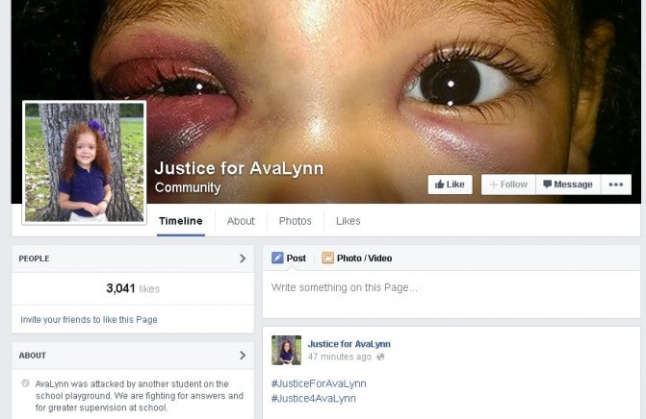

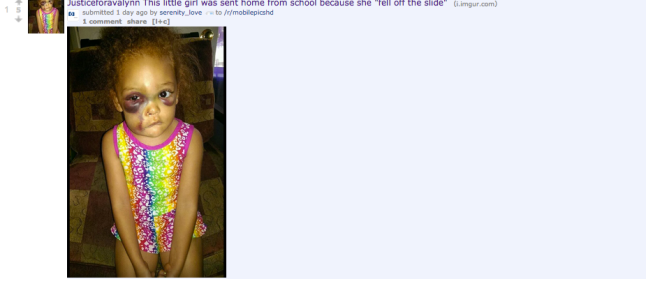
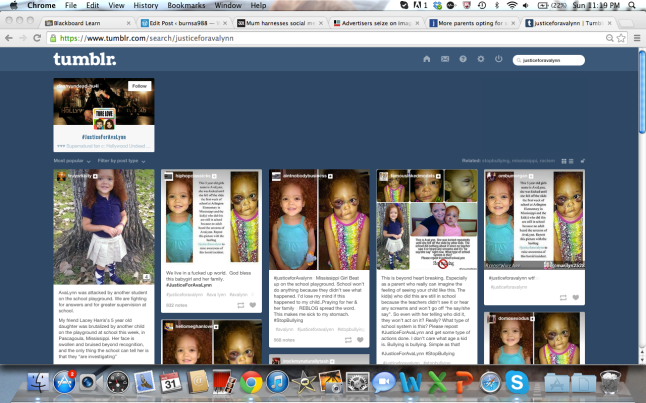

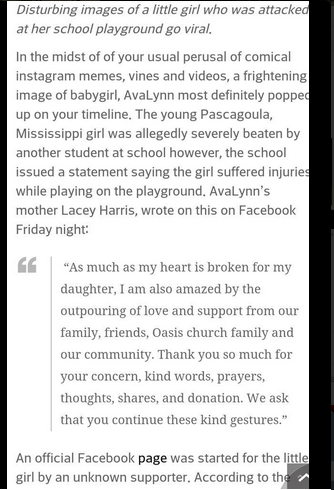

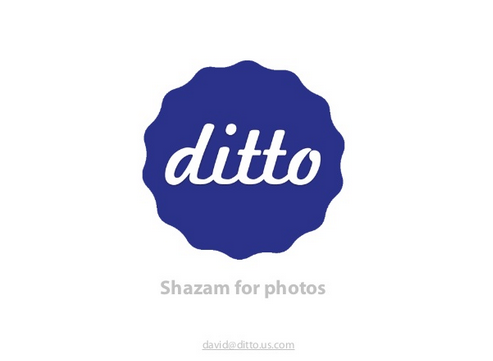
These are great questions – I think I’ll take a stab at one. My perspective may be different, but also interesting…we shall see.
I’m public. Very public with my professional self. As a professor, speaker, researcher, with my Twitter, Pinterest, etc… however, I draw the line. I am very private when it comes to my family. I have Instagram, but it’s not public. I have FB, but it’s not public, I live in three worlds – my private life, my professional life, and my online life.
So I think that if a brand was using my images I would have a tough time with that. I want to give consent and know how my images would be used.
Follow up question for you – do you segregate your “lives” like I mentioned above?
LikeLike
I never used to segregate my “lives,” however, now that I am a senior in college and have to look for a job soon, I am definitely going to start more. I was never one to post details about myself on social media anyway, and I always made all of my profiles the most private they could be. After college, I am going to clean up my friends and followers on my accounts and make sure only the people I really want seeing my posts can see them, not put many pictures up, and delete a lot of information I might have put up in the past.
LikeLike
Very interesting post, Allison! Following up from Professor Luttrell’s post/question, I think that everyone who has an online presence considers the online world as a separate place than the real world. Before downloading social media apps like Instagram and Facebook, you must accept to the terms before you can create your own account. Many people are unaware, but we actually give up the rights to images we post on certain sites, even though we’ve agreed to it. In the Terms of Use for Instagram, one of the Rights listed say, “Instagram does not claim ownership of any Content that you post on or through the Service. Instead, you hereby grant to Instagram a non-exclusive, fully paid and royalty-free, transferable, sub-licensable, worldwide license to use the Content that you post on or through the Service, subject to the Service’s Privacy Policy” (Instagram). “Instagram has one hundred million users and holds four billion photos” (Luttrell 23). With such a large volume of inventory, Instagram could be using our photos for unknown purposes everyday without our consent, even if we think we’ve made our account as private as possible. All of my social media sites are as private as can be, but really, nothing is private. Just this week, a number of celebrities became a victim of a hacking of nude pictures on the iCloud. Really…the iCloud?
If I found out that one of my pictures were being used for other purposes (without my permission), I would not be pleased. I don’t like my privacy being invaded – especially if the photo was personal and captured my raw emotions. Social media can be a great tool for advertising and PR campaigns but there are also consequences/risks that come with social media movements. We must be aware and understand the risk factors in order to be prepared for the unwanted.
Citations
Lutrell, Regina. Social Media: How to Engage, Share, and Connect. S.l.: Rowman & Littlefield, 2014. Print.
Terms of Use. (2014). Instagram. Retrieved on 2014, September 5 from http://instagram.com/legal/terms/
LikeLike
Just curious, who or what did you find that was using your photo?
It’s so crazy that all of those photos were just leaked from iCloud just before Apple releases their new iPhone too. I wonder how that is going to impact sales. We shall see in the upcoming weeks (Reuters 2014).
On a side note, the leaked photos of Jennifer Lawrence and Kate Upton are going to be displayed at The Cory Allen Contemporary Art Showroom in St. Petersburg, Florida, which is about the invasion of privacy and has been in the works for two years. Anyone who posts the stolen pictures are going to be prosecuted, but Allen is getting away with this by saying it is art, not just photos.He says they are not just posting them or trying to exploit anything, but just mirroring who we are today. He has used celebrities in his work before, like Brittany Spears in 2007 when she shaved her head (Arnowitz 2014). What do you think about that?
Arnowitz, Leora. “Leaked Nude Photos of Jennifer Lawrence, Kate Upton to Be Showcased at Art Gallery.” Fox News. FOX News Network, 04 Sept. 2014. Web. 05 Sept. 2014. .
Reuters. “Apple: We’re Not to Blame for Leaked Celebrity Photos.” Newsweek. Newsweek LLC, 03 Sept. 2014. Web. 05 Sept. 2014. .
LikeLike